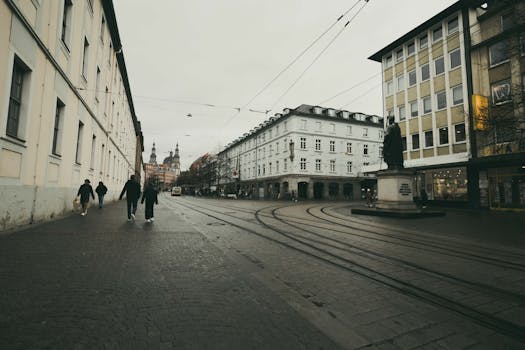
Urban Green Spaces: The Future of Outdoor Living in European Cities by 2025
Urban Green Spaces are the future of outdoor living in European cities. By 2025, these spaces will play a crucial role in promoting sustainability, improving air quality, and enhancing the overall quality of life for residents. In this article, we will explore the importance of urban green spaces, their benefits, and how they are being integrated into European cities.
What are Urban Green Spaces?
Urban green spaces refer to areas of vegetation, trees, and other greenery that are intentionally designed and managed to provide ecosystem services and benefits to urban residents. These spaces can range from small parks and gardens to large urban forests and green roofs. Urban green spaces are essential for maintaining urban biodiversity, mitigating the urban heat island effect, and improving air quality.
Benefits of Urban Green Spaces
The benefits of urban green spaces are numerous. Some of the most significant advantages include:
- Improved air quality: Urban green spaces help to remove pollutants and particulate matter from the air, improving respiratory health and overall well-being.
- Climate regulation: Green spaces can mitigate the urban heat island effect, reducing the need for air conditioning and heating.
- Increased biodiversity: Urban green spaces provide habitat for urban wildlife, supporting local ecosystems and promoting biodiversity.
- Recreational opportunities: Green spaces offer areas for recreation, relaxation, and socialization, improving mental health and overall quality of life.
European Cities Leading the Way
Many European cities are at the forefront of urban green space development. Cities like Copenhagen, Stockholm, and Amsterdam are incorporating green spaces into their urban planning, recognizing the importance of sustainability and green infrastructure. These cities are implementing innovative solutions, such as green roofs, urban forests, and park systems, to create livable and sustainable environments for their residents.
Challenges and Opportunities
Despite the numerous benefits of urban green spaces, there are still challenges to be addressed. Some of the key obstacles include:
- Space constraints: Urban areas often have limited space available for green spaces, requiring creative solutions and innovative designs.
- Funding: Implementing and maintaining urban green spaces can be costly, requiring significant investment and funding.
- Community engagement: Encouraging community involvement and participation in urban green space development is crucial for long-term success and sustainability.
However, these challenges also present opportunities for innovation and collaboration. By working together, cities, residents, and stakeholders can create vibrant and sustainable urban environments that prioritize green spaces and promote outdoor living.





